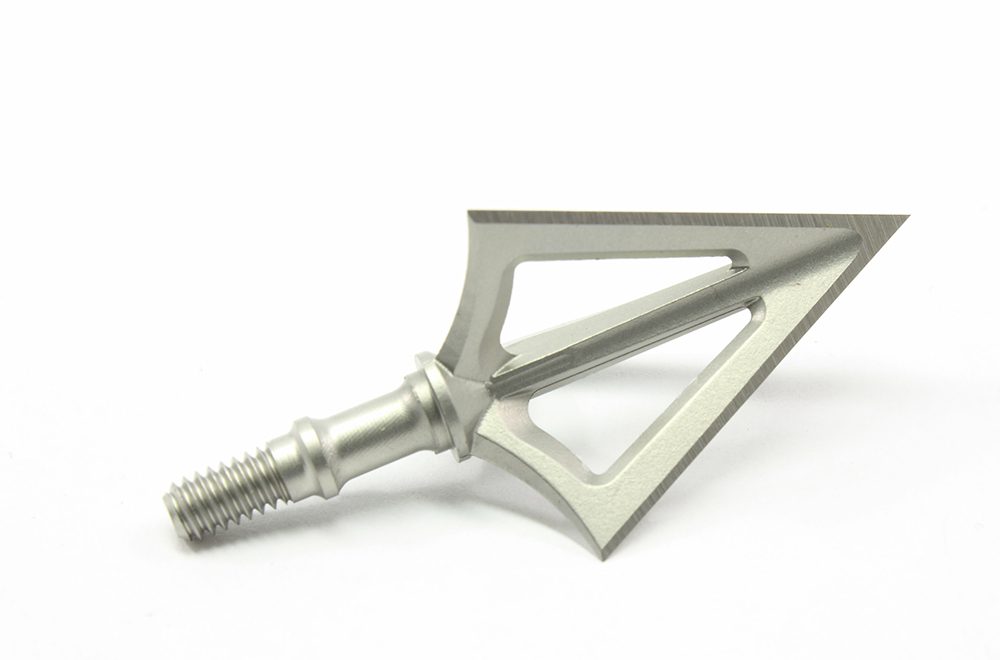Types of Arrows and Broadheads for Hunting
Hunting with a bow and arrow requires a combination of skill, precision, and the right equipment. A critical component that will decide whether or not you punch your tag is selecting the right arrow and broadhead for your bow setup. There are a dizzying array of both arrows and broadheads on the market.
That’s why in this article, we’ll discuss the different types of arrows and broadheads available for hunting and what to consider in selecting the right combination for different game types. Whether you’re a seasoned hunter or a beginner, understanding the nuances of arrows and broadheads can make all the difference when it comes to tagging your next animal.
Types of Arrows for Hunting
Selecting the right arrow for hunting can make all the difference in your hunting success. There are four different types of arrows commonly used for hunting.

Carbon Arrows:
Carbon arrows are one of the most popular choices for hunters due to their durability, accuracy, and lightweight. They’re constructed with a carbon fiber core, making them more resistant to bending or breaking compared to traditional arrows. Carbon arrows tend to fly faster and flatter, making them ideal for longer shots. They also come in a variety of diameters, including micro and ultra-micro, which offer even better penetration. Their main disadvantage is that they can be more expensive than other types of arrows.
Aluminum Arrows:
Aluminum arrows were the traditional choice for hunting before the invention of carbon arrows. They’re still popular today due to their affordability and availability. They’re also very durable, making them ideal for use with heavier draw weights or for shooting at hard targets. However, aluminum arrows tend to be heavier than carbon arrows, which can affect their flight trajectory.
Carbon/Aluminum Hybrid Arrows:
Carbon/aluminum hybrid arrows, such as the popular Easton Full Metal Jacket, offer the best of both worlds. These arrows have a carbon core with an aluminum outer layer, combining the lightweight and accuracy of carbon with the durability and penetration of aluminum. They’re ideal for big game hunting or shooting at hard targets, where a heavier arrow is needed for maximum penetration.
Wood Arrows:
Wood arrows have been used for hunting for centuries and are still popular among traditional archers. They’re typically made of high-quality hardwoods like cedar or ash and can be customized to suit the archer’s preferences. Wood arrows are generally slower and heavier than carbon or aluminum arrows. However, they offer the classic look and feel that many archers prefer. Wood arrows should only be shot from recurve or longbows. This is because they cannot hold up to the higher speeds of modern compound bows.
Arrow choice ultimately comes down to personal preference, and the type of hunting you’ll be doing. With any type of arrow, it’s critical to consider factors such as arrow weight, spine stiffness, and fletching when selecting your arrows. Every arrow manufacturer has a spine chart, and most are supplied on the back of the box. Use these charts to match the correct spine to your particular bow parameters when buying your arrows.
Types of Broadheads for Hunting
Selecting the right broadhead for hunting is just as important as selecting the right arrow, and the two go hand-in-hand for a complete arrow build. Here are the different types of broadheads commonly used for hunting.

Fixed-Blade Broadheads:
Fixed-blade broadheads have been used for hunting for centuries and are still popular among traditional archers. These broadheads feature a fixed blade that is permanently attached to the ferrule. They tend to be more durable and reliable than other types of broadheads, as they have fewer moving parts. However, they may require more tuning to ensure they fly straight and can be more difficult to sharpen. Within the fixed-blade category, there are different tip styles as well as replaceable blade styles.
Suitable Animals: Fixed-blade broadheads work for most game animals, including turkey, coyotes, and deer. Ethically speaking, they are the preferred broadhead for the hardiest game like buffalo, grizzly bear, moose, and elk.
Mechanical Broadheads:
Mechanical broadheads, also known as expandable broadheads, have gained popularity in recent years due to their accuracy and penetration. These broadheads feature blades that remain closed during flight and expand upon impact with the target. They’re typically more aerodynamic than fixed-blade broadheads and tend to fly more consistently. However, they may be less reliable than fixed-blade broadheads due to their moving parts.
Suitable Animals: Mechanical broadheads work great for most of the same game that fixed-blades do, like turkey, deer, pronghorn, and coyotes. There are differing schools of thought on whether they should be used on larger game like elk and bear. Ultimately, it is up to the individual bowhunter and what is legal in your state.
Hybrid Broadheads:
Hybrid broadheads combine the best features of fixed-blade and mechanical broadheads. They feature a fixed blade for increased durability and reliability. They also have mechanical blades for increased penetration. Hybrid broadheads are ideal for hunters who want the reliability of a fixed-blade broadhead with the penetration of a mechanical broadhead.
Suitable Animals: Hybrid broadheads give the best of both worlds and are suitable for hunting the same wide range of game as fixed-blade and mechanicals.
Small Game Points:
Small game points, such as judo points, are designed for hunting small game animals like rabbits and squirrels. These points typically have a blunt tip that prevents the arrow from penetrating too deeply and damaging the meat. Judo points, in particular, have small spring arms that prevent the arrow from burying itself in the ground or vegetation, making it easier to retrieve.
Suitable Animals: Small game points are specifically for hunting small game animals like rabbits, grouse, and squirrels. Never use these blunt points for big-game hunting.
Choosing the Right Combination of Arrows and Broadheads
Putting together the right combination of arrows and broadheads is crucial for safety, clean kills, and the successful recovery of animals. You want the shafts and broadheads to match up in a way that maximizes penetration and maintains accuracy for the specific game you’re hunting. Mismatched arrows and broadheads can result in erratic flight and even injury to the animal.
Matching Arrow Spine to Broadhead Weight
Arrow spine is the stiffness of the arrow, and it’s essential to match it to the weight of the broadhead you’ll be using. If the arrow spine is too weak for the broadhead weight, the arrow will flex too much. This can result in inconsistent flight and decreased accuracy. On the other hand, if the arrow spine is too stiff for the broadhead weight, the arrow will not flex enough. This will also result in inconsistent flight and decreased accuracy.
When matching spine to your broadhead weight, also consider what you’re hunting and the average distance you’ll be hunting. For instance, when hunting bear, you’ll most likely be taking shorter shots at a pretty stout animal. So, a 125-grain broadhead (versus 100) will increase the overall weight of the arrow, giving you better penetration.
Testing and Tuning Your Arrows and Broadheads
Once you’ve matched the arrow spine to the broadhead weight, the next step is to test and tune your arrows and broadheads for optimal performance. This involves shooting a group of arrows with your chosen broadheads and adjusting the arrow rest, nocking point, and other settings until you achieve tight groups and consistent flight patterns. This process may take some time and patience, but it’s well worth the effort to ensure your arrows and broadheads are performing at their best.
Whether you’re using a traditional recurve or a modern compound bow, understanding the different types of arrows and broadheads available can help you make an informed decision. Ultimately, the key is to find the combination that maximizes accuracy and penetration, so you can confidently and ethically pursue your next trophy.





